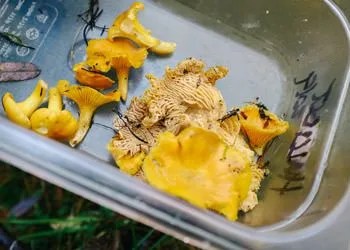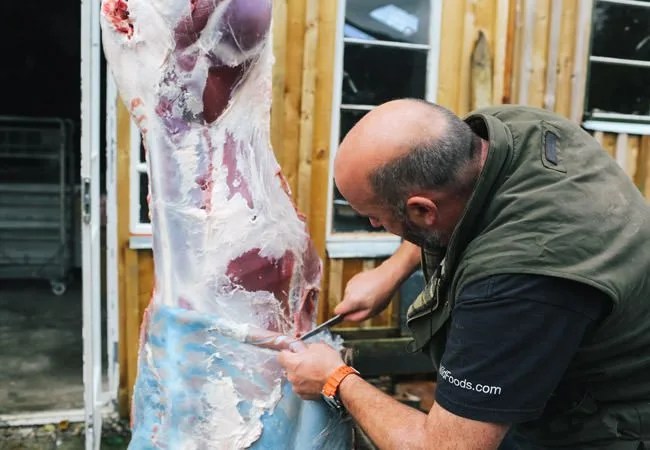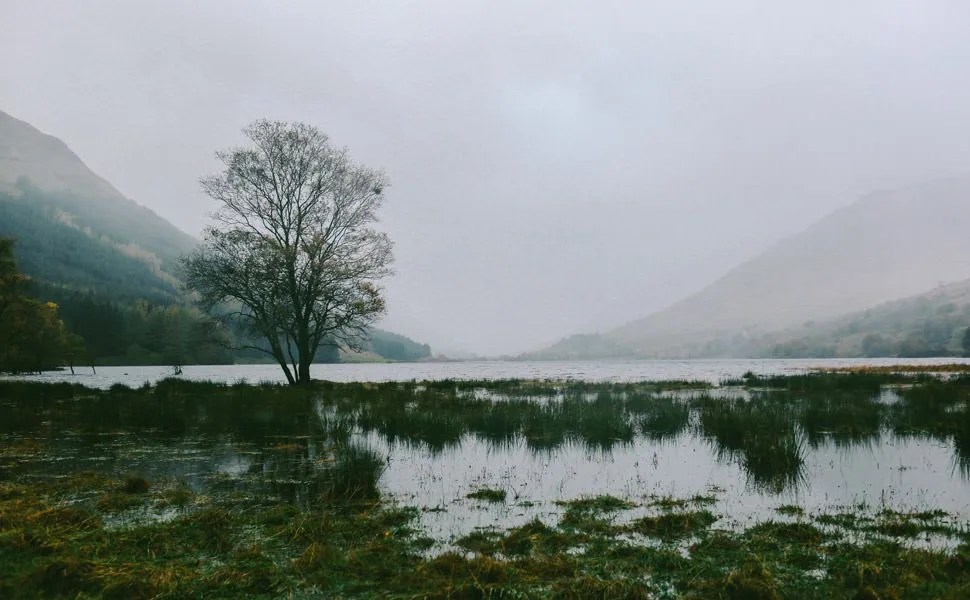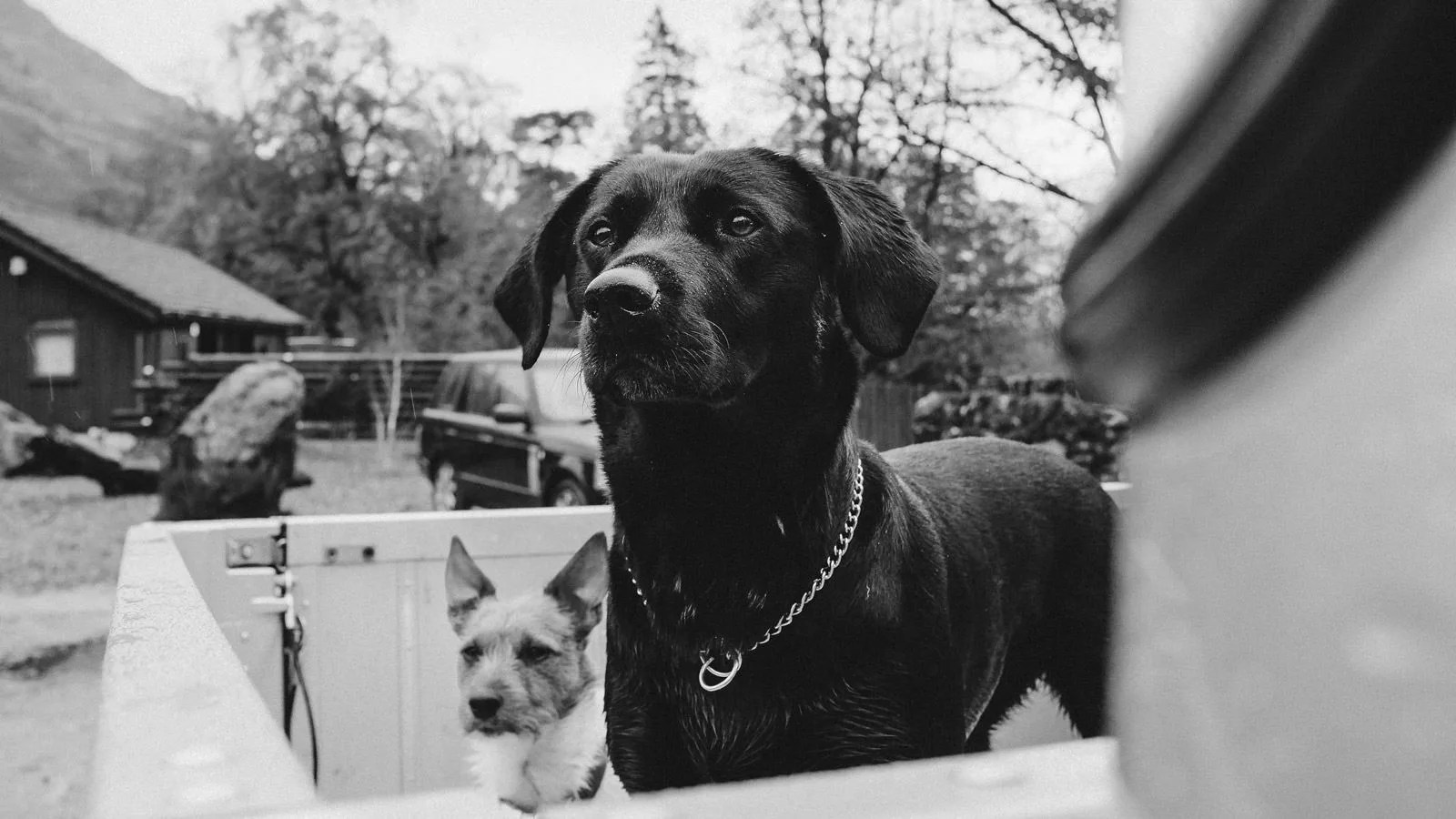“Want to know the easiest way to find mushrooms?” Tom Lewis says, rhetorically. “Put your knife back in your pocket. As soon as you put your knife away you start seeing more bloody mushrooms.” I’ve only known this guy for a day but it’s long enough to know that he’s not really frustrated. He’s buoyancy incarnate, bald headed, weighing just enough to let you know he’s enjoying life’s pleasures in his middle age, grinning as he tends to his business as owner, chef, butcher, handyman and welcome committee of Monachyle Mhor, his 14-room hotel and farm on 2,000 acres in Balquhidder, a town in the Trossachs National Park in the Scottish Highlands.

“This is one of those little spots you keep for emergencies”, he says, hunched over on hand and knee, digging into the soft, rich, wet earth with a knife. His two dogs, a Jack Russell terrier named Tinker and a black lab named Betty, trample about in the leaves excitedly. An “emergency” for Lewis would be a dinner service in which he runs out of cepes, or the chanterelles that accompany the main course of Blairgowrie Scotch beef. He keeps a motorbike in the courtyard for situations like this.
This is no emergency, though: we’re just hanging out with Lewis on a misty day down in the valley just west of Loch Doine, getting a sense of Scotland’s natural bounty. There are snow-capped Munros rising 3,500 feet in the distance, visible in several directions. Blackface sheep and Highland cattle roam lower, down in the hills. A ray of sunshine peeks through the cloud cover and illuminates the autumn colors.
VENISON WITH WILD MUSHROOMS AND GREENS
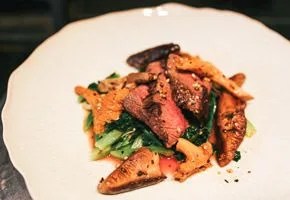
Tom Lewis’s recipe for venison loin with mushrooms and greens couldn’t be easier. Since all of the ingredients come from his property in Balquhidder, consider substituting similar ingredients from wherever your home is. Serves one.

